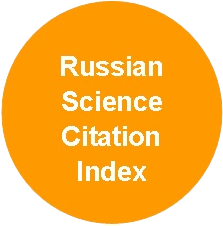Оценка физико-механических свойств древесины сосны (Pinus sylvestris L.) ультразвуковыми преобразователями разной частоты
DOI:
https://doi.org/10.37482/0536-1036-2025-5-143-152Ключевые слова:
динамический модуль упругости, неразрушающий контроль, плотность древесины, прочность древесины, скорость ультразвукового сигнала, ультразвук, ультразвуковой преобразовательАннотация
Акустический неразрушающий контроль получил широкое распространение при оценке технического качества и внутреннего состояния древесины в деревянных конструкциях и у растущих деревьев. При этом порода древесины, ее влажность и направление волокон, наличие пороков, а также частота ультразвуковых преобразователей могут оказывать значимое влияние на измерение скорости ультразвукового сигнала в древесине. Развитие приборной базы, а также несогласованность результатов предыдущих исследований послужили основанием для проведения отдельной серии опытов по изучению воздействия частоты ультразвуковых преобразователей на точность косвенного определения плотности, деформативности и прочности древесины при статическом изгибе. Исследования проведены на 176 образцах древесины сосны обыкновенной (Pinus sylvestris L.) с использованием ультразвуковых приборов Пульсар 2.2 (ООО НПП «Интерприбор», Челябинск, Россия) и Pundit PL-200 (Proceq SA, Шверценбах, Швейцария) с применением ультразвуковых преобразователей номинальной частотой 24, 54, 60 и 150 кГц. Подтверждено, что частота ультразвуковых преобразователей значимо влияет на скорость сигнала и динамический модуль упругости, а также что плотность древесины не связана со скоростью ультразвукового сигнала. Установлено, что точность прогнозирования модуля упругости и предела прочности древесины при статическом изгибе, оцененная по коэффициенту детерминации (R2 = 0,88–0,91) линейных моделей взаимосвязи данных параметров с динамическим модулем упругости, не зависит от частоты ультразвукового преобразователя. При этом качество моделей прогнозирования физико-механических свойств древесины по скорости ультразвука значимо ниже по сравнению с параметром динамического модуля упругости. Полученные регрессионные модели могут быть использованы для неразрушающей оценки механических свойств древесины у растущих деревьев сосны и в элементах деревянных конструкций акустическим методом прохождения, а дальнейшие исследования будут направлены на изучение вариабельности акустических параметров древесины сосны у растущих деревьев.
Скачивания
Библиографические ссылки
Бобылева Ю.Н., Давыдов С.Л., Зарецкий-Феоктистов Г.Г. К вопросу об определении упругих параметров древесины ультразвуковым методом // Изв. вузов. Лесн. журн. 1978. No 3. С. 156–159. Bobyleva Yu.N., Davydov S.L., Zaretskij-Feoktistov G.G. On the Issue of Determining the Elastic Parameters of Wood Using the Ultrasonic Method. Lesnoy Zhurnal = Russian Forestry Journal, 1978, no. 3, pp. 156–159. (In Russ.). Окончание табл. 3
Кобзарь А.И. Прикладная математическая статистика. Для инженеров и научных работников. М.: ФИЗМАТЛИТ, 2006. 816 с. Kobzar A.I. Applied Mathematical Statistics. For Engineers and Scientists. Moscow, FIZMATLIT Publ., 2006. 816 p. (In Russ.).
Колесникова А.А. Исследование свойств древесины по кернам: Научное издание. Йошкар-Ола: Марийск. гос. техн. ун-т, 2002. 178 с. Kolesnikova A.A. The Study of Wood Properties Based on Core Samples: Scientific Publication. Yoshkar-Ola, Mari State Technical University Publ., 2002. 178 p. (In Russ.).
Лакатош Б.К. Дефектоскопия древесины. М.: Лесн. пром-сть, 1966. 182 с. Lakatosh B.K. Wood Flaw Detection. Moscow, Lesnaya promyshlennost’ Publ., 1966. 182 p. (In Russ.).
Федяев А.А., Чубинский А.Н. Неразрушающие методы контроля свойств продукции из древесины. СПб.: ГАЛАНИКА, 2022. 118 с. Fedyaev A.A., Chubinskij A.N. Non-Destructive Methods of Testing the Properties of Wood Products. St. Petersburg, GALANIKA Publ., 2022. 118 p. (In Russ.).
Arriaga F., Llana D.F., Esteban M., Íñiguez-González G. Influence of Length and Sensor Positioning on Acoustic Time-of-Flight (ToF) Measurement in Structural Timber. Holzforschung, 2017, vol. 71, iss. 9, pp. 713–723. https://doi.org/10.1515/hf-2016-0214
Arriaga F., Osuna-Sequera C., Bobadilla I., Esteban M. Prediction of the Mechanical Properties of Timber Members in Existing Structures Using the Dynamic Modulus of Elasticity and Visual Grading Parameters. Construction and Building Materials, 2022, vol. 322, art. no. 126512. https://doi.org/10.1016/j.conbuildmat.2022.126512
Baar J., Tippner J., Rademacher P. Prediction of Mechanical Properties – Modulus of Rupture and Modulus of Elasticity – of Five Tropical Species by Nondestructive Methods. Maderas. Ciencia y tecnología, 2015, vol. 17, no. 2, pp. 239–252. https://doi.org/10.4067/S0718-221X2015005000023
Bucur V. Acoustics of Wood. Berlin, Heidelberg, Springer, 2006. 394 p. https://doi.org/10.1007/3-540-30594-7
Downes G.M., Lausberg M., Potts B.M., Pilbeam D.L., Bird M., Bradshaw B. Application of the IML Resistograph to the Infield Assessment of Basic Density in Plantation Eucalypts. Australian Forestry, 2018, vol. 81, iss. 3, pp. 177–185. https://doi.org/10.1080/00049158.2018.1500676
Kang H., Booker R.E. Variation of Stress Wave Velocity with MC and Temperature. Wood Science and Technology, 2002, vol. 36, pp. 41–54. https://doi.org/10.1007/s00226-001-0129-x
Kloiber M., Reinprecht L., Hrivnák J., Tippner J. Comparative Evaluation of Acoustic Techniques for Detection of Damages in Historical Wood. Journal of Cultural Heritage, 2016, vol. 20, pp. 622–631. https://doi.org/10.1016/j.culher.2016.02.009
Kohlhauser C., Hellmich C., Vitale-Brovarone C., Boccaccini A.R., Rota A., Eberhardsteiner J. Ultrasonic Characterisation of Porous Biomaterials Across Different Frequencies. Strain, 2009, vol. 45, iss. 1, pp. 34–44. https://doi.org/10.1111/j.1475-1305.2008.00417.x
Llana D.F., Short I., Harte A.M. Use of Non-Destructive Test Methods on Irish Hardwood Standing Trees and Small-Diameter Round Timber for Prediction of Mechanical Properties. Annals of Forest Science, 2020, vol. 77, art. no. 62. https://doi.org/10.1007/s13595-020-00957-x
Mora C.R., Schimleck L.R., Isik F., Mahon J.M., Clark A., Daniels R.F. Relationships between Acoustic Variables and Different Measures of Stiffness in Standing Pinus taeda Trees. Canadian Journal of Research, 2009, vol. 39, no. 8, pp. 1421–1429. https://doi.org/10.1139/X09-062
Nowak T.P., Jasieńko J., Hamrol-Bielecka K. In situ Assessment of Structural Timber Using the Resistance Drilling Method – Evaluation of Usefulness. Construction and Building Materials, 2016, vol. 102, part 1, pp. 403–415. https://doi.org/10.1016/j.conbuildmat.2015.11.004
Proto A.R., Macrì G., Bernardini V., Russo D., Zimbalatti G. Acoustic Evaluation of Wood Quality with a Non-Destructive Method in Standing Trees: a First Survey in Italy. iForest – Biogeosciences and Forestry, 2017, vol. 10, iss. 4, pp. 700–706. https://doi.org/10.3832/ifor2065-010
Ross R.J., Pellerin R.F. Nondestructive Testing for Assessing Wood Members in Structures: a Review. General Technical Report FPL, GTR-70. US Department of Agriculture, Forest Service, 1994. 39 p. https://doi.org/10.2737/FPL-GTR-70
Sharapov E., Brischke C., Militz H., Smirnova E. Prediction of Modulus of Elasticity in Static Bending and Density of Wood at Different Moisture Contents and Feed Rates by Drilling Resistance Measurements. European Journal of Wood and Wood Products, 2019, vol. 77, pp. 833–842. https://doi.org/10.1007/s00107-019-01439-2
Sharapov E., Demakov Yu., Korolev A. Effect of Plantation Density on Some Physical and Technological Parameters of Scots Pine (Pinus sylvestris L.). Forests, 2024, vol. 15, no. 2, art. no. 233. https://doi.org/10.3390/f15020233
Tippner J., Hrivnák J., Kloiber M. Experimental Evaluation of Mechanical Properties of Softwood Using Acoustic Methods. BioResources, 2016, vol. 11, iss. 1, pp. 503–518. https://doi.org/10.15376/biores.11.1.503-518
Vázquez C., Gonçalves R., Bertoldo C., Baño V., Vega A., Crespo J., Guaita M. Determination of the Mechanical Properties of Castanea sativa Mill. Using Ultrasonic Wave Propagation and Comparison with Static Compression and Bending Methods. Wood Science and Technology, 2015, vol. 49, pp. 607–622. https://doi.org/10.1007/s00226-015-0719-7
Wang S.-Y., Chuang S.-T. Experimental Data Correction of the Dynamic Elastic Moduli, Velocity and Density of Solid Wood as a Function of Moisture Content above the Fiber Saturation Point. Holzforschung, 2000, vol. 54, iss. 3, pp. 309–314. https://doi.org/10.1515/HF.2000.052
Wang S.-Y., Lin C.-J., Chiu C.-M. The Adjusted Dynamic Modulus of Elasticity Above the Fiber Saturation Point in Taiwania Plantation Wood by Ultrasonic-Wave Measurement. Holzforschung, 2003, vol. 57, iss. 5, pp. 547–552. https://doi.org/10.1515/HF.2003.081
Wang X. Acoustic Measurements on Trees and Logs: a Review and Analysis. Wood Science and Technology, 2013, vol. 47, pp. 965–975. https://doi.org/10.1007/s00226-013-0552-9
Wang X., Ross R.J., McClellan M., Barbour J., Erickson J.R., Forsman J.W., McGinnis G.D. Strength and Stiffness Assessment of Standing Trees Using a Nondestructive Stress Wave Technique. Research Paper FPL, RP–585. US Department of Agriculture, Forest Service, 2000. 9 p.
Wang X., Ross R.J., Carter P. Acoustic Evaluation of Wood Quality in Standing Trees. Part I. Acoustic Wave Behavior. Wood and Fiber Science, 2007, vol. 39, no. 1, pp. 28–38.
Yang H., Yu L., Wang L. Effect of Moisture Content on the Ultrasonic Acoustic Properties of Wood. Journal of Forestry Research, 2015, vol. 26, pp. 753–757. https://doi.org/10.1007/s11676-015-0079-z
Загрузки
Опубликован
Как цитировать
Выпуск
Раздел
Лицензия
Copyright (c) 2025 А.С. Королев, Е.С. Шарапов, А.О. Быков, О.С. Егошин (Автор)

Это произведение доступно по лицензии Creative Commons «Attribution» («Атрибуция») 4.0 Всемирная.












